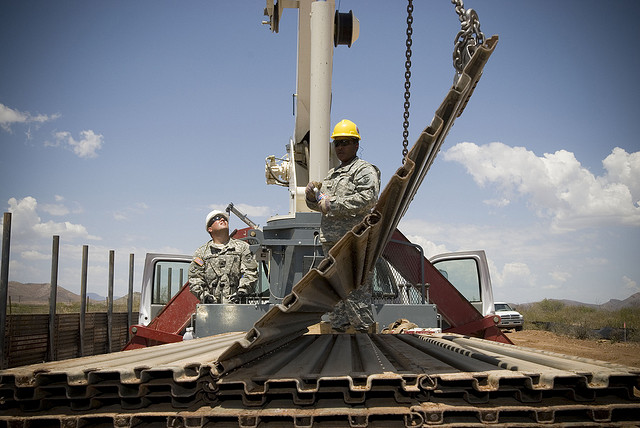From the wall to the burqa: why the politics of immigration is all about big symbols

*Why you should read this: Because it helps to understand why the border wall, while nearly impossible to build and pay for, continues to resonate among people who live far from it. Because it uncovers the way large symbols frame the immigration issue. VL
By David Iaconangelo, Christian Science Monitor (4.5 minute read) 
The first thing to remember about Donald Trump’s Great Wall: It’s not a fence.
So said the president-elect at his first post-election news conference on Wednesday, correcting a reporter who inquired about whether Mexico would pay for the “border fence,” as promised on the campaign trail.
“On the fence – it’s not a fence. It’s a wall. You just misreported it. We’re going to build a wall,” said Mr. Trump.
The exchange came as House Republicans continue to hash out details with the incoming administration on a plan to resurrect parts of a border-control law passed by George W. Bush, according to Politico.
Read more stories about the U.S.-Mexico border wall in NewsTaco. >>
But it may have also underscored how outsized symbols of national and cultural sovereignty, like border walls or Islamic veils, have become prominent as political hot buttons in US and European immigration debates.
In the United States, immigration dialogues often revolve around the southern border. Imagery and rhetoric staged there resound well beyond it, many policy experts believe.
Do you like stories that reflect authentic latino life in the U.S.?
Be part of a positive change.
[Photo by U.S. Army/Flickr]

